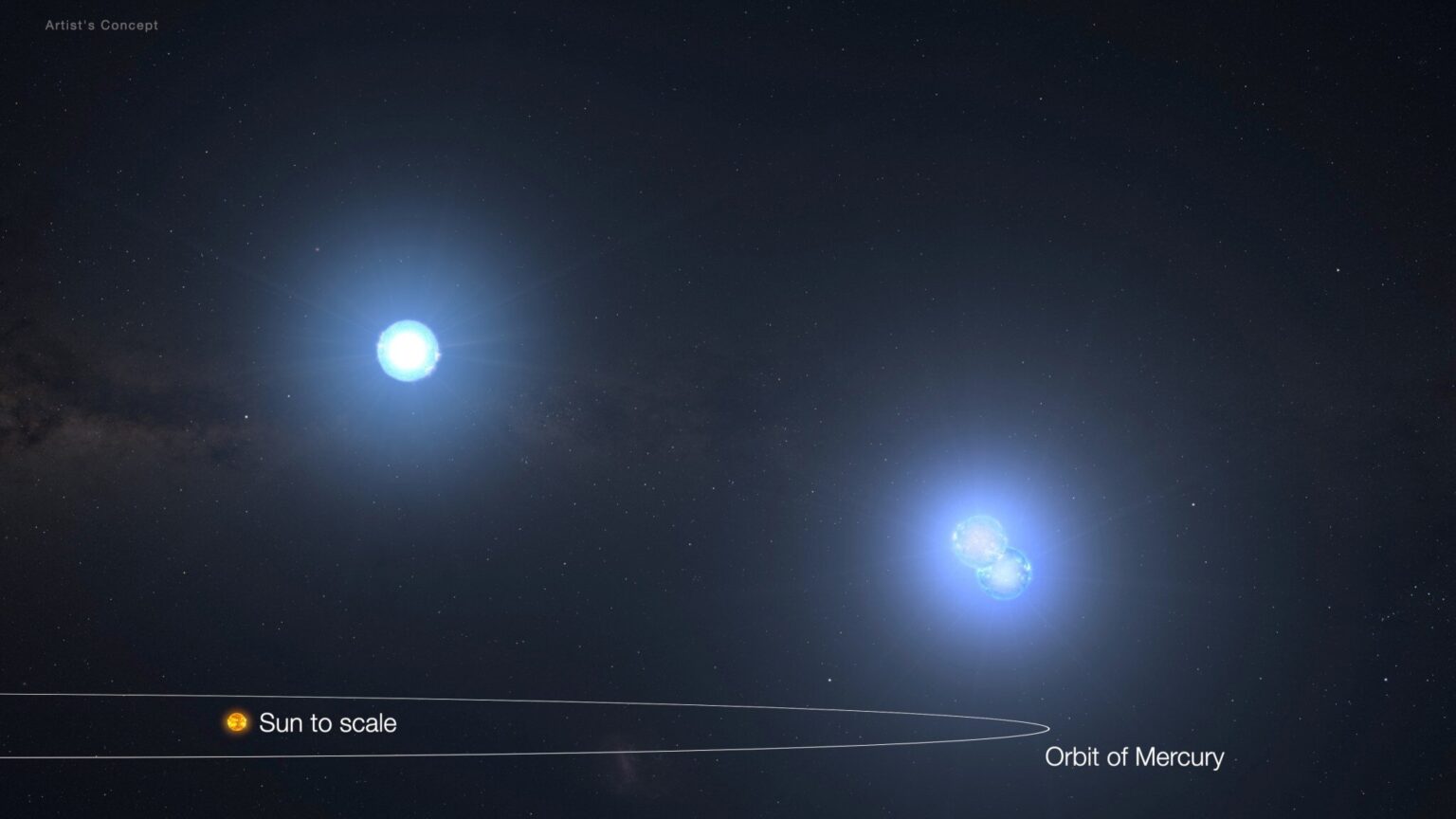Astronomers have been able to determine that the star system TIC 290061484 is actually a triple star system. At the same time, even the most distant of the three luminaries makes one orbit around the other two only in 25 Earth days. This result was achieved thanks to the use of artificial intelligence and the help of amateurs.

Record triple system
On October 2, The Astrophysical Journal published an article by researchers from the Goddard Space Center, in which they reported the discovery of a triple star system with a record-short orbital period of the components.
The star system TIC 290061484 is located in the constellation Cygnus. The central pair of luminaries in it orbits one around the other with a period of only 1.8 days. The third luminary makes one orbit around them in 25 days.
In general, the three-star system could fit completely inside Mercury’s orbit. We see it practically “from the edge”. As a result, we know that all three stars orbit almost in the same plane and the system, despite all its tightness, is stable.
TIC 290061484 will remain stable for at least another 20-40 million years. However, the stars will eventually increase their luminosity, and the two central stars will merge into one. But that’s a long way off.
How to detect a triple star system?
Interestingly, the past record for the “ tightness” of a triple star system has held since 1956. In that system, the most distant star makes one orbit in 33 days. Now we know that’s far from the limit.
To find out the parameters of the system TIC 290061484, scientists had to work hard with data from NASA’s Transiting Exoplanet Survey Satellite (TESS). This spacecraft is known for discovering thousands of planets outside the Solar System. However, the objective this time was indeed non-standard.
In order to reproduce the orbit of all three components, astronomers first applied an artificial intelligence system that learned from previous observations. And then the already-filtered data were once again analyzed by amateur astronomers who spent a lot of time on this task.
Eventually, the mystery of the system TIC 290061484 was solved. Now scientists aim to search for closer triple systems. At the same time, they rely on the Nancy Grace Roman space telescope, which is supposed to be launched into orbit in the future.
According to phys.org


